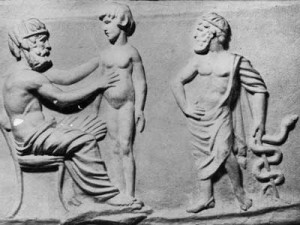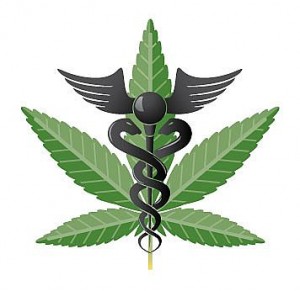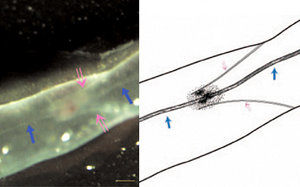- Holistic Health Care619-227-6338
Located in San Diego
Call for an appointment and directions
-
Latest Articles:
- • Spring Clean Your Way to Better Health •
- • 5 Healthy Ways to Embrace the Spring Season •
- • Fun Things to do this Spring •
Uncategorized
Your Optimal Mood
 If you experience mild to moderate depression, there are some natural treatment methods you may want to consider.
If you experience mild to moderate depression, there are some natural treatment methods you may want to consider.
In addition to following your doctor’s recommendations and talking with a therapist, start getting regular exercise. There is no better method than engaging in regular aerobic exercise for rapid benefits in alleviating depression.
Aim for 30 minutes of continuous physical activity at least five days a week for best results.
In addition, follow a well-balanced diet and include an antioxidant multi-vitamin/mineral supplement to ensure you are meeting your nutritional needs for all the essential nutrients. The B-complex vitamins – especially folic acid and vitamin B6 – and fish oil (try 1,000 – 2,000 mg per day), can also be helpful in supporting optimal mood.
Health for the Ages
 Medical historian Alain Touwaide says DNA analysis of clay-bound pills from a Roman shipwreck confirms traces of the same dried carrot, radish, cabbage, celery, wild onion, and parsley described in ancient Greek medical texts. This medicine was most likely used to treat intestinal disorders. The brownish, coin-size pills – preserved in tin boxes for two millennia – are the first proof that the writings were “not just theoretical but actually applied.” Touwaide says the second-century physician Galen referred to broccoli, a relative of cabbage, as an intestinal cancer treatment. Studies today confirm the plant’s anticancer properties – making “eat your vegetables” a timeless prescription.
Medical historian Alain Touwaide says DNA analysis of clay-bound pills from a Roman shipwreck confirms traces of the same dried carrot, radish, cabbage, celery, wild onion, and parsley described in ancient Greek medical texts. This medicine was most likely used to treat intestinal disorders. The brownish, coin-size pills – preserved in tin boxes for two millennia – are the first proof that the writings were “not just theoretical but actually applied.” Touwaide says the second-century physician Galen referred to broccoli, a relative of cabbage, as an intestinal cancer treatment. Studies today confirm the plant’s anticancer properties – making “eat your vegetables” a timeless prescription.
Surprising News About Medical Marijuana
 Cannabis is legal for medical use in only 19 of the 50 states, but a new poll shows that 76 percent of physicians would recommend or prescribe medical marijuana to patients experiencing cancer pain. For the poll, published in the May 30, 2013, issue of the New England Journal of Medicine, doctors were asked whether medical marijuana should be prescribed to a 68-year-old woman with symptoms from metastatic breast cancer. The researchers reported that 1,446 physicians from 56 North American states and provinces and 72 countries returned an opinion (although more than 1,000 of the responses came from the U.S. and Canada). The investigators noted that each U.S. state and Canadian province with at least 10 participants casting votes demonstrated more than 50 percent support for medicinal marijuana (except Utah, where only one percent of 76 voters supported cannabis use in a cancer patient). At the opposite end of the spectrum was Pennsylvania with 96 percent of 107 physicians supporting the use of medical marijuana in the case described. In comments, doctors who favored prescribing medicinal marijuana often focused on their responsibility to relieve pain, and some described personal experiences with patients who benefited from the use of marijuana. Opponents based their objections on lack of evidence, inconsistency of dosage, and concern about side effects.
Cannabis is legal for medical use in only 19 of the 50 states, but a new poll shows that 76 percent of physicians would recommend or prescribe medical marijuana to patients experiencing cancer pain. For the poll, published in the May 30, 2013, issue of the New England Journal of Medicine, doctors were asked whether medical marijuana should be prescribed to a 68-year-old woman with symptoms from metastatic breast cancer. The researchers reported that 1,446 physicians from 56 North American states and provinces and 72 countries returned an opinion (although more than 1,000 of the responses came from the U.S. and Canada). The investigators noted that each U.S. state and Canadian province with at least 10 participants casting votes demonstrated more than 50 percent support for medicinal marijuana (except Utah, where only one percent of 76 voters supported cannabis use in a cancer patient). At the opposite end of the spectrum was Pennsylvania with 96 percent of 107 physicians supporting the use of medical marijuana in the case described. In comments, doctors who favored prescribing medicinal marijuana often focused on their responsibility to relieve pain, and some described personal experiences with patients who benefited from the use of marijuana. Opponents based their objections on lack of evidence, inconsistency of dosage, and concern about side effects.
I am a supporter of legislative action that would allow medical professionals to prescribe cannabis for patients who could benefit from its use. Evidence shows that it can relieve pain, nausea, vomiting, and symptoms associated with MS, cancer, and HIV/AIDS as well as alleviate side effects of drugs used to treat these diseases. I’m believe that marijuana is much less toxic than most pharmaceutical drugs currently used for these patients. However, smoking may not be the safest way to use marijuana’s medicinal benefits. More research is necessary to determine the best mode of administration.
Children absorb 10 times more radiation from cell phones
Children who use cell phones are absorbing dangerous levels of microwave radiation – up to 10 times more then the amount adult users are exposed to.
They absorb twice as much radiation to their heads, three times the level in the hippocampus and hypothalamus regions of the brain and eyes, and 10 times more radiation to the bone marrow, compared to an adult.
Scientists from the US Environmental Health Trust are calling for new parameters for safe levels of radiation based on body size – they recognize children are using cell phones.
The researchers claim that children in the US are absorbing levels of radiation that are double the safe upper limit set by the country’s Federal Communications Commissions.
(Eletromagnetic Biology and Medicine, 2011; 111014062656002).
New scientific breakthrough proves why acupuncture works
New groundbreaking research shows that the insertion of an acupuncture needle into the skin disrupts the branching point of nerves called C fibres. These C fibres transmit low-grade sensory information over very long distances by using Merkel cells as intermediaries. Dr. Morry Silberstein of the Curtin University of Technology will publish his research in the Journal of Theoretical Biology later this year.
We have never really had a scientific explanation for how acupuncture actually works,” he said. In the absence of a scientific rationale, acupuncture has not been widely used in the mainstream medical community. If we can explain the process scientifically, we can open it to full scientific scrutiny and develop ways to use it as a part of medical treatments.”
Dr. Silberstein mentions that they have known, for some time, that the acupuncture points show lower electrical resistance than other nearby areas of the skin. His research specifically pinpoints that the C fibres actually branch exactly at acupuncture points. Scientists don’t know exactly what role C fibres play in the nervous system, but Dr. Silverstein theorizes that the bundle of nerves exists to maintain arousal or wakefulness. The insertion of the acupuncture needle disrupts this circuit and numbs our sensitivity to pain.”
Acupuncture for pain relief is actually being taught to American Air Force physicians deployed to Iraq and Afghanistan (2009) by Dr. Richard Niemtzow MD, PhD, MPH and editor of Medical Acupuncture. His technique called “Battlefield Acupuncture” relieves severe pain for several days and is a variation of acupuncture, which inserts very tiny semi-permanent needles at specific acupoints on the skin of the ear that blocks pain signals from reaching the brain.
“This is one of the fastest pain attenuators in existence,” said Dr. Niemtzow, who is the Consultant for complementary and alternative medicine for the Surgeon General of the Air Force, and is affiliated with Uniformed Services University of the Health Sciences in Bethesda. “The pain can be gone in five minutes.”
It has taken quite a long time for Western medicine to embrace acupuncture even though it was introduced in the early 1970’s after contacts with China improved.
Professor Tsuei mentions: “In 1972 the respected New York Times columnist James Reston underwent an emergency appendectomy while in China. He later wrote about acupuncture treatment for post-operative pain that was very successful. This report attracted attention and many American physicians and researchers went to China to observe and learn acupuncture techniques.”
Since then, only a few controlled studies were done in the West. Yale researchers proved its effectiveness for cocaine addiction in 2000 and published their findings in the August 14 issue of the Archives of Internal Medicine.
A North Korean researcher, Kim Bonghan, published papers in the early 1960’s and his research was confirmed by the Japanese researchers Fujiwara and Yu in 1967. Unfortunately his research took almost 40 years to be confirmed through studies done on rats, rabbit and pigs with Stereo-microscope photographs and electron microsopy.
The amazing photo above shows the stereomicroscopic image of acupuncture meridians:
“Assemblies of tubular structures 30 to 100 micro-meters wide (red blood cells are 6-8 micro-meters in diameter). Apparently these structures have remained undiscovered for so long because they are almost transparent and so thin that they are barely visible with low-magnification surgical microscopes. They are also easily confused with fibrin, which coagulates and obscures these structures when there is bleeding in dissected tissues. Now that they have been rediscovered, researchers are investigating their composition and function. The tubular structures that make up Bonghan channels contain a flowing liquid that includes abundant hyaluronic acid, a substance that cushions and lubricates the joints, eyes, skin and even heart valves. Also visible in the photographs are small granules of DNA or microcells about 1-2 micro-meters in diameter that contain chromosomal material highly reactive to stem-cell antibody stains. When these cells were isolated and then induced to differentiate, they grew into cells of all three germ layers. These may be our body’s natural source of pluripotent adult stem cells, with the potential to develop into any cell in the body”
Russian researchers in 1991 at The Institute for Clinical and Experimental Medicine in Novosibirsk, USSR, in a research project lasting several years, discovered how the human body conducts light. They found that the light conducting ability of the human body exists only along the meridians, and can enter and exit only along the acupuncture points. Dr. Kaznachejew, a professor of physics said:
“This seems to prove that we have a light transferal system in our body somewhat like optical fiber. It appears that the light can even travel when the light canal is bent, or totally twisted. The light appears to be reflected from the inner surface, appearing to go in some sort of zigzag track. You can explain this through traditional electromagnetic light theory as it is used in optical fiber communications.”
This finding has been confirmed by a 1992 study in the Journal of Traditional Chinese Medicine and a 2005 study in the Journal of Alternative and Complementary Medicine where moxibustion and infrared thermography were used to trace meridian pathways.
There might be a “light body” after all.
Read more of Tima Vlasto’s articles
Resources:
Studies:
A Randomized Controlled Trial of Auricular Acupuncture for Cocaine Dependence.S. Kelly Avants, PhD; Arthur Margolin, PhD; Theodore R. Holford, PhD; Thomas R. Kosten, MD Arch Intern Med. 2000;160:2305-2312.
Immunomodulatory Effects of Acupuncture in the Treatment of Allergic Asthma: A Randomized Controlled Study.Stefanie Joos, M.D. Department of Anaesthetics, University of Heidelberg, Heidelberg, Germany.
Research:
Meridians conduct light by Dr. Sergei Pankratov, Moskow, Published by Raum and Zeit, Germany,1991.Translated from the German by Wolfgang Mitschrich
Bonghan Channels in Acupuncture By David Milbradt, LAc, Acupunture Today
Bonghan Duct and Acupuncture Meridian as Optical Channel of Biophoton
Curtin University of Technology These C fibres transmit low-grade sensory information over very long distances by using Merkel cells as intermediaries.
Scientific Evidence in Support of Acupuncture and Meridian Theory Professor Julia J. Tsuei M.D., F.A.C.O.G.
Medical acupuncture gaining acceptance by the US Air Force
Acupuncture is promising treatment for cocaine addiction, Yale researchers find
Photo Credit: Acupuncture Today: A stereomicroscopic image of the lymphatic vessel around the caudal vena cava of a rat. The photograph (left) and its illustration (right) show the novel threadlike structure (solid arrow) that passes throw the lymphatic valve (open arrow). The photograph was taken in vivo and in situ, and a piece of black paper was put under the lymphatic vessel to exhibit the target clearly. The scale bar is 100 micro-meters..
Wikimedia Commons: Physican inserting needle
The dirty dozen and the clean 15 of produce
This is an article written By Jackie Pou
May 13, 2010
A new report issued by the President’s Cancer Panel recommends eating produce without pesticides to reduce your risk of getting cancer and other diseases. And according to the Environmental Working Group (an organization of scientists, researchers and policymakers), certain types of organic produce can reduce the amount of toxins you consume on a daily basis by as much as 80 percent.
The group put together two lists, “The Dirty Dozen” and “The Clean 15,” to help consumers know when they should buy organic and when it is unnecessary. These lists were compiled using data from the United States Department of Agriculture on the amount of pesticide residue found in non-organic fruits and vegetables after they had been washed.
The fruits and vegetables on “The Dirty Dozen” list, when conventionally grown, tested positive for at least 47 different chemicals, with some testing positive for as many as 67. For produce on the “dirty” list, you should definitely go organic — unless you relish the idea of consuming a chemical cocktail. “The Dirty Dozen” list includes:
- celery
- peaches
- strawberries
- apples
- domestic blueberries
- nectarines
- sweet bell peppers
- spinach, kale and collard greens
- cherries
- potatoes
- imported grapes
- lettuce
All the produce on “The Clean 15” bore little to no traces of pesticides, and is safe to consume in non-organic form. This list includes:
- onions
- avocados
- sweet corn
- pineapples
- mango
- sweet peas
- asparagus
- kiwi fruit
- cabbage
- eggplant
- cantaloupe
- watermelon
- grapefruit
- sweet potatoes
- sweet onions
Why are some types of produce more prone to sucking up pesticides than others? Richard Wiles, senior vice president of policy for the Environmental Working Group says, “If you eat something like a pineapple or sweet corn, they have a protection defense because of the outer layer of skin. Not the same for strawberries and berries.”
The President’s Cancer Panel recommends washing conventionally grown produce to remove residues. Wiles adds, “You should do what you can do, but the idea you are going to wash pesticides off is a fantasy. But you should still wash it because you will reduce pesticide exposure.”
Remember, the lists of dirty and clean produce were compiled after the USDA washed the produce using high-power pressure water systems that many of us could only dream of having in our kitchens.
The full list contains 49 types of produce, rated on a scale of least to most pesticide residue. You can check out the full list from on the Environmental Working Group’s website at www.foodnews.org.
Salmon in Parchment
Salmon, like other oily fish (herring, sardines, mackerel), is rich in omega-3 fatty acids that reduce inflammation, protect against heart attacks, and reduce one’s chances of developing cancer. When you want something out of the ordinary, this is an easy and elegant recipe to try. It requires cooking parchment, which you will find in rolls or sheets at kitchen-supply stores and even many supermarkets. Parchment-wrapped food turns into taut packages as steam inflates the sealed pouches. (Be careful when slitting them open to avoid being burned.) The result is a delicate mix of textures and aromas that’s sure to please.
Food as Medicine
Eating fish such as salmon as little as one to three times monthly may protect against ischemic stroke (a type of stroke caused by lack of blood supply to the brain, due to a clot or other factors), according to a meta-analysis of eight studies published in the July, 2004 issue of the journal Stroke.
Ingredients
8 ounces thin spaghetti
1 tablespoon extra-virgin olive oil
1/4 teaspoon salt
2 tablespoons fresh dill or parsley, chopped
1 cup carrots julienned
1 cup zucchini, julienned
1 cup asparagus tips
1 cup red bell pepper, julienned
24-ounce salmon filet, cut into four 6-ounce pieces
2 tablespoons Dijon mustard
4 large sheets of parchment paper
Instructions
1. Heat oven to 400°.
2. Cook thin spaghetti in rapidly boiling water until al dente, drain, toss with a bit of olive oil, salt and chopped fresh dill or parsley.
3. Rinse salmon filets and pat dry. Spread Dijon mustard evenly over the top of each one.
4. Prepare the parchment. First, fold each piece of parchment in half. With scissors, cut the shape of half a heart from the folded side. (Remember the valentines you made in grade school?) Open the heart shape and place 1/4 of the pasta on the center of the paper, top with a salmon filet, and add the vegetables. Bring the sides of the heart over the fish and fold the edges together – starting at the top of the heart, overlapping the folded edge as you go. Fold the tip several times to secure it.
5. Place the pouches in the middle of the hot oven and bake for 10 minutes. Serve immediately in the sealed pouches, opening them just before eating.
Serves 4
Nutrients Per Serving
Calories: 533.1
Protein: 45.9 grams
Fat: 14.9 grams
Saturated Fat: 2.8 grams
Monounsat Fat: 6.4 grams
Polyunsat Fat: 4.2 grams
Carbohydrate: 51.8 grams
Fiber: 5.2 grams
Cholesterol: 75.6 mg
Vitamin A: 6,543.6 IU
Vitamin E: 2.8 mg/IU
Vitamin C: 83.1 mg
Calcium: 99.0 mg
Magnesium: 102.3 mg
Feng Shui for Health
The center of your home is the health area according to the feng shui bagua.
This area is used to enhance health concerns because it is the epitome of balance – complete yin and yang energies.
Power Tools: earth, items made from earth, fruit, funny stuff, yellow, gold, earth tones, squares, symbols of earth, horizontal or flat items, fire, stars and sun, religious objects, red, triangular or pointy objects.
Hazardous Materials: wood, green, columnar or rectangular objects, spiral staircases.










